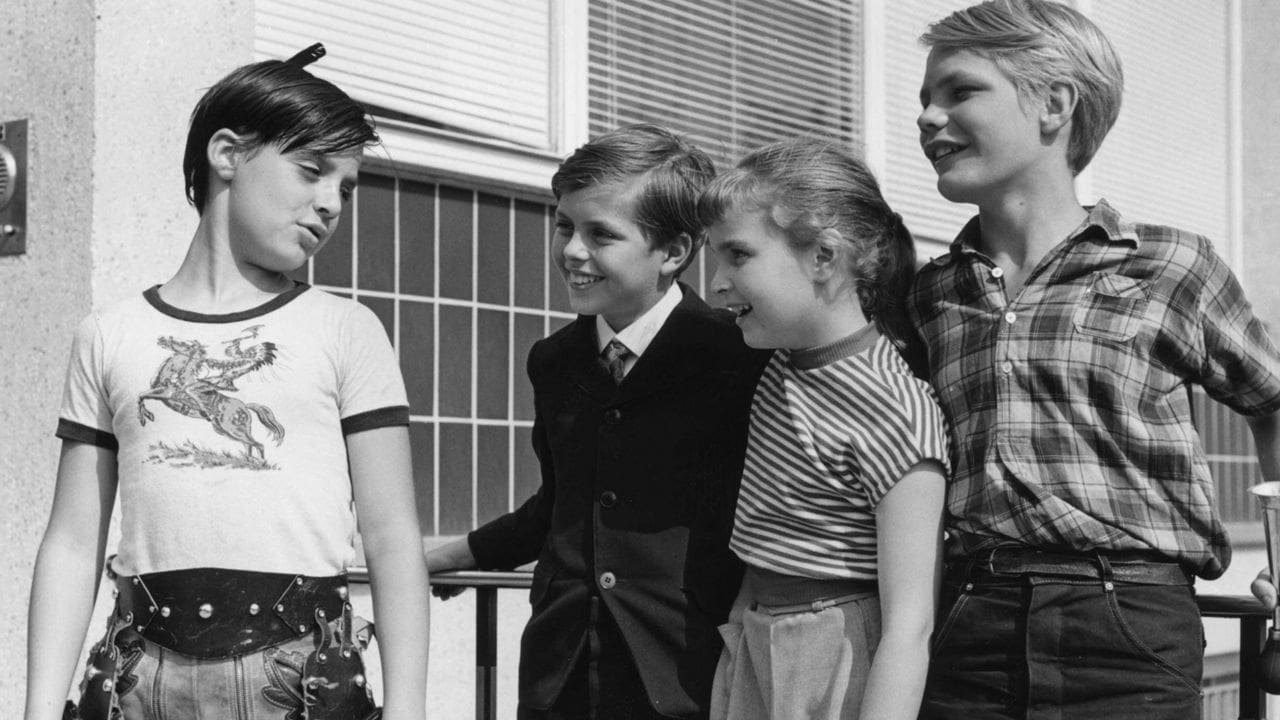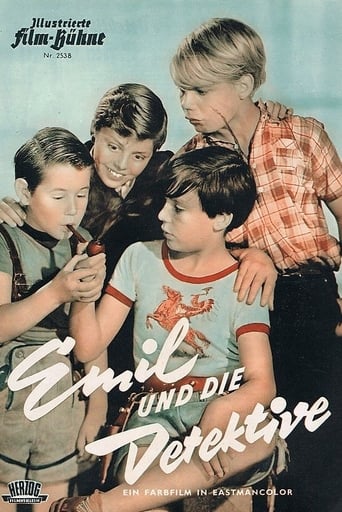

This is a coming of age storyline that you've seen in one form or another for decades. It takes a truly unique voice to make yet another one worth watching.
... View MoreIf you're interested in the topic at hand, you should just watch it and judge yourself because the reviews have gone very biased by people that didn't even watch it and just hate (or love) the creator. I liked it, it was well written, narrated, and directed and it was about a topic that interests me.
... View MoreThis is a gorgeous movie made by a gorgeous spirit.
... View MoreThe storyline feels a little thin and moth-eaten in parts but this sequel is plenty of fun.
... View More"Emil und die Detektive" or "Emil and the Detectives" is a West German German-language movie from 1954, so this one is already way over 60 years old. The writer and director is the prolific Robert A. Stemmle, one of the most successful German filmmakers of his time and here he adapted the work by Erich Kästner, who wrote the famous children's book, and Billy Wilder who worked on the script of the 1930s black-and-white film with the same name. I guess they really wanted a color version and that was one of the main reasons why this one was made. To put in in a perspective of time by the way, this one is exactly from the year when Germany won the Soccer World Cup for the first time. It runs slightly over 90 minutes and has Peter Finkbeiner star as the title character. For Finkbeiner, it was the beginning of a career that was very short as he made his final performance only two years later, but thanks to this film here, he is not entirely forgotten. Little Emil gets drugged and sedated by a man in the train to Berlin (actually a pretty dark plot reference for a kids movie) and his briefcase is stole, but thanks to new friends in the city, he manages to turn the thief's live into a true nightmare. I watched the 1930s film a while ago too and I was not impressed by that one either. The only thing better here is obviously the use of color, but in terms of the story and execution I found it just as forgettable. I guess the material is just not for me. I cannot say how close this is to Kästner's original work as I have not read that one. One thing I did not like early on is that Emil gets away with the same "crime" that his friends at school are punished for and this is one reason why I never found the character as likable as they wanted me to find him. Also, what happened to this part of the plot at the very end when he returns home? It's completely absent. And this is not the only part that does not make entirely sense. I know it is a children's book and film and all, but some realism is truly necessary. I did not think this was a good film. Thumbs down.
... View MoreCommon wisdom says remakes are rarely better than the original. In this case, the 1954 version can stand up proudly against the 1931 version.There are more: in addition to the 2001 latest German version, Emil has been put to film in Argentina, Brazil, Japan, UK (1935) and US (1964). Makes eight. Such world-wide attention is not so frequent, for a children's book no less.But back to 1954. It sticks quite close to the 1931 script (by Billie Wilder), but pads it - love interests are added for Emil's mother and Grundeis, and parents for Polly. The subplot of the sleeping pills in the coffee (dangling in 1931) was brought to comedic conclusion.But what made this movie most lovable for me were the period details, especially street scenes - both in 1931 and 1954. The 1954 version gains much by using the ruins of Kaiser-Wilhelm-Gedächtniskirche as backdrop (briefly seen, intact, in 1931). Interesting that the money amounts (140 marks stolen, 1000 marks reward) needed not to be updated.All in all, a well-done update, and at 54 years of age a venerable museum piece itself. I had seen it years ago, but enjoyed a re-watch (and that an hour after watching the 1931 version). Both are very good, for different reasons.
... View MoreThis movie follows the script of the 1931 version, but stretches it with additional scenes to 90 minutes. I wasn't happy with this movie, since it changes e.g. the whole beginning - we all know how Emil was afraid of going to the police because he had "decorated" a statue in his hometown. Now in this movie he does something completely different, and so at first I didn't even recognize which of the boys was supposed to be Emil. Then the movie adds a love story between Emil's mother and Wachtmeister Jeschke. Erich Kästner actually married them off in his second "Emil"-book, but in the novel neither Emil nor his mother are quite happy with this Vernunftehe (prudent marriage), while in the movie it's all fun and happiness. I also found the dialog somewhat forced, the villain downright stupid and the police festival completely superfluous. Still, the movie gets five points for showing off 1950s Berlin. Notably the modern apartment buildings and the ruin of the Gedächtniskirche make very good backdrops for the storyline. Note how Pony Hütchen asks for the "Interzonenzug" - how nice that we've overcome the zone-era!
... View MoreErich Kastner wrote the story about a young boy who is drugged and robbed of some money which was pinned into his clothing by his mother. He is, of course, horrified, and rather than tell her the truth, he enlists the help of an army of young detectives. It reminds me of the pursuit of the psychotic child killer Peter Lorre in M, 1931. Later remakes are universally boring and tepid.
... View More